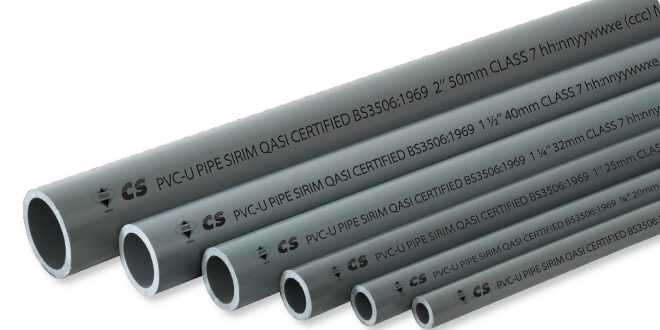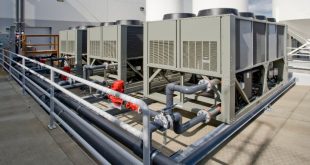When it comes to plumbing and construction, selecting the right materials is crucial for ensuring long-lasting performance and reliability. Among the various options available, PVC pressure pipe plain end stands out due to its versatility, durability, and cost-effectiveness. This blog will provide you with a comprehensive understanding of the specifications of PVC pressure pipe plain end and how to choose the best fit for your needs.
What is PVC Pressure Pipe Plain End?
PVC (Polyvinyl Chloride) pressure pipe plain end is a type of plastic piping designed specifically for high-pressure applications. It is used in various sectors, including residential, commercial, and industrial plumbing. The “plain end” designation refers to the fact that the ends of the pipe are cut straight, allowing for easy connection to fittings or other pipes. This design enhances flexibility in installations and simplifies the joining process.
Key Features of PVC Pressure Pipe Plain End
- Durability: One of the most significant advantages of PVC pressure pipe plain end is its resistance to corrosion and chemical damage. Unlike metal pipes, PVC does not rust or corrode, making it an ideal choice for various applications, including wastewater management and irrigation systems.
- Lightweight: PVC pressure pipe is much lighter than traditional materials such as steel or cast iron. This characteristic makes transportation and installation easier, reducing labor costs and time on the job site.
- Cost-Effective: The affordability of PVC pressure pipe plain end makes it a popular choice among contractors and homeowners. Its lower initial cost, combined with minimal maintenance requirements, leads to significant savings in the long run.
- High Pressure Resistance: Designed to handle high-pressure applications, PVC pressure pipe can withstand significant internal pressure without deforming or bursting. This feature is essential for systems that require consistent water pressure.
- Smooth Interior: The smooth interior surface of PVC pipes minimizes friction, promoting efficient flow and reducing the likelihood of blockages. This aspect is particularly beneficial in plumbing systems where optimal water flow is necessary.
Understanding Pipe Specifications
When selecting PVC pressure pipe plain end for your project, it’s crucial to consider several key specifications:
1. Diameter and Length
PVC pressure pipes come in various diameters, ranging from small sizes for residential plumbing to larger sizes for industrial applications. Common diameters include 20mm, 25mm, 50mm, 75mm, and more. Lengths typically range from 3 to 6 meters, depending on the manufacturer and application. Ensure you choose the correct diameter and length to suit your project’s requirements.
2. Pressure Rating
The pressure rating of PVC pressure pipe plain end is a critical specification to consider. This rating indicates the maximum pressure the pipe can withstand without failure. Standard ratings include 6 bar, 10 bar, and 16 bar, among others. When selecting a pipe, it’s essential to consider the maximum pressure of your application and choose a pipe with a rating that exceeds this value.
3. Material Standards
PVC pressure pipe must comply with specific industry standards to ensure its quality and reliability. Look for pipes that meet or exceed standards such as ASTM D1785, ASTM D2241, or ISO 4422. These standards provide guidelines for dimensions, tolerances, and performance characteristics, ensuring that the pipe will perform as expected in various applications.
4. Temperature Resistance
While PVC pressure pipes are suitable for a range of temperatures, it’s essential to understand their limitations. Most PVC pipes can handle temperatures up to 60°C (140°F). However, prolonged exposure to higher temperatures can lead to deformation and reduced performance. If your application involves hot water or steam, consider alternatives such as CPVC (Chlorinated Polyvinyl Chloride) pipes.
5. Joinery Methods
PVC pressure pipe plain end can be joined using various methods, including solvent cementing and mechanical fittings. Solvent cementing involves applying a special adhesive that chemically bonds the pipes together, creating a strong, leak-proof joint. Mechanical fittings, such as compression fittings or flanges, can also be used for ease of installation and disassembly. Choose the method that best suits your project’s requirements.
Applications of PVC Pressure Pipe Plain End
The versatility of PVC pressure pipe plain end makes it suitable for a wide range of applications, including:
- Irrigation Systems: PVC pressure pipes are widely used in agricultural irrigation systems due to their ability to withstand high pressure and resist chemical corrosion.
- Water Supply: In both residential and commercial settings, PVC pressure pipes are commonly used for potable water supply lines.
- Wastewater Management: The corrosion-resistant properties of PVC make it an excellent choice for sewer and drainage systems.
- Industrial Applications: PVC pressure pipe is also used in various industrial processes, including chemical processing and manufacturing.
Choosing the Right PVC Pressure Pipe Plain End
When selecting PVC pressure pipe plain end for your project, consider the following steps:
- Assess Your Needs: Determine the specific requirements of your project, including diameter, pressure rating, and application type.
- Consult Industry Standards: Ensure the pipe you choose meets industry standards for quality and performance.
- Evaluate Installation Methods: Consider the joining methods available and choose one that fits your installation process.
- Seek Professional Advice: If you’re unsure about which pipe to choose, consult with a plumbing professional or supplier. They can provide guidance based on your unique needs and application.
Conclusion
Understanding the specifications of PVC pressure pipe plain end is essential for making informed decisions in plumbing and construction projects. Its durability, lightweight nature, cost-effectiveness, and high pressure resistance make it an ideal choice for various applications. By carefully considering the specifications outlined in this blog, you can choose the right PVC pressure pipe plain end that meets your needs and ensures a reliable, long-lasting solution for your plumbing or construction requirements.
 Diverse Perspectives: Insights & Stories Exploring Ideas, Sharing Knowledge
Diverse Perspectives: Insights & Stories Exploring Ideas, Sharing Knowledge





